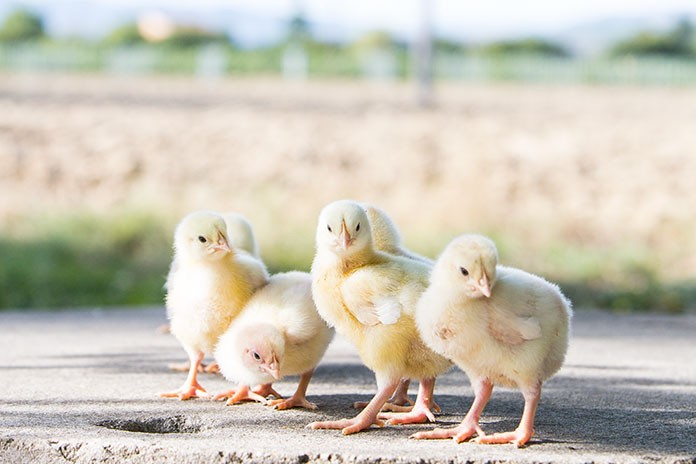
The main problem with introducing whole-grain diets (WGD) to newly hatched chicks is the kernel size and this has led to such diets being delayed by at least 5 days and up to as many as 11-14 days.
However, several studies have offered WGD as early as hatch and some as late as 24 days of age. The interest in increasing the size and activity of the gizzard through feeding whole grain has developed from research reports that showed improved morphology of the intestinal tract, which in return enhances nutrient digestibility and utilization. Sorghum is attractive due to its small kernel size which can be fed to young birds without difficulties in swallowing.
A total of 324 day-old male broiler chickens were randomly assigned to a 3 (age of introduction) × 2 (with or without xylanase) factorial arrangement in a completely randomized design having six replicates, with nine birds per replicate. A whole sorghum inclusion level of 50 % with or without xylanase was offered to birds at hatch (HWG), 11 d (WG11) or 25 d (WG25).
Feed intake (1-35 d) was numerically higher in the HWG group than in the WG11 and WG25 groups. However, final body weight was poorest (P < 0.01) in the WG11 group than in the two other groups.
Final body weight was not improved by enzyme supplementation. Overall FCR was best (P<0.1) in groups in which the introduction of WGD was delayed and without enzyme supplementation.
The interactions between the two factors were not significant except for feed intake between hatch and 10 days of age. The AME of the diets was higher (P < 0.001) when WGD was introduced at hatch and at 11 d than when it was introduced at 25 d. The ileal digestibility of energy and CP was numerically improved by early introduction of WGD.
The results obtained in this study showed that early introduction of WGD to broiler chickens increases feed consumption but may not be beneficial for growth and feed efficiency.
References are available on request
From 2017 Australian Poultry Science Symposium

















